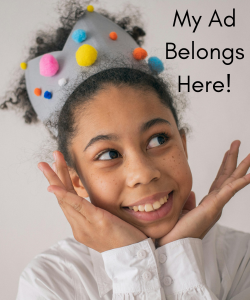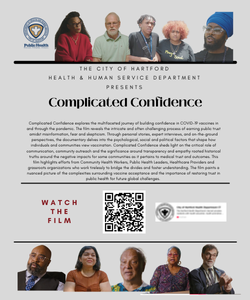By Kelsey Brown
Every Saturday between 1 p.m. and 5 p.m., the Washington Neighborhood Center in Sacramento, California, vibrates with house beats. Unknowing neighbors peer in curiously, but for those in the know, the intimate gathering is a dynamic hub to practice voguing and connect with community. The room is vibrant, partly because of the bright murals that adorn the walls, but mostly because of the colorful choreography of those sharing the dance floor.
Although the event begins at 1 p.m., dancing doesn’t usually begin until later. “See how it’s 2:30?” Ka’lonji Escada says, wearing a red rose in her hair and seated with her DJ equipment. “I put 1 to 5. Ballroom time. People get here on ballroom time.”
When Escada, mother of the Kiki House of Moschino and member of the Iconic House of Escada, attended her first ball in Dallas, Texas, in 2021, she insisted on being there promptly at 9 p.m. The event didn’t start until 3 a.m. It’s part of ballroom culture. “Femme queens [need] time to get ready,” she says. “It takes time. You can’t rush.”
When the event officially begins, the room suddenly comes alive with movement, chanting, and snapping.
“I call it gay church,” Escada says. “The stomping, the clapping, the pastor on the mic.”
Ballroom is a “microcosm of society built through the lens of queer Black people,” according to Escada. One case study defined ballroom as involving “fashion runway categories, voguing, and performances that transcend gender and sexual identities. Participants have the opportunity to walk in particular categories and win trophies. The more one wins, the more elevated one’s social status within the community.”
What could be oversimplified as simply “nightlife” serves full-bodied and multifaceted purposes: spotlight and celebration, safe space, familial support, homage to queer history, connection to culture and resources, and plenty of shade.
Escada began her ballroom house in Sacramento in 2021. Tired of driving two hours to Oakland, California, for balls, Escada saw a historic opportunity to start a Kiki ballroom scene, a light-hearted subcategory catered toward youth, in Sacramento. That’s when The 916 Is Burning, the ball Escada formed with a few friends, was born.
“The elders of ballroom gatekeep [and] make sure ballroom has a standard,” Escada says. “But sometimes that becomes a little unattainable for the youth that could really benefit from the space. That’s why Kiki was born.”
The ballroom scene has evolved into a hypercompetitive environment where prizes for certain categories can cash out at $25,000. The Kiki scene is a less intimidating—or as Escada says, less “fierce”—entry point for people beginning their ballroom careers.
“We found our own community through ballroom and we still are today,” Escada says. “However, so many people are so focused on the points of it all, the money, that they’re forgetting what this shit is even for.”
The Backstory of Ballroom
Ballroom dates back to the late 19th century, when William Dorsey Swann, a formerly enslaved man, began hosting private balls. An 1887 article in The Washington Critic reported a police raid where “six colored men, dressed in elegant female attire, were arraigned,” also noting that “the lace on their skirts was very heavy, and apparently of good material.”
The contemporary ballroom scene emerged in the late 1960s, when Crystal LaBeija, a Black trans woman and drag mother, founded the House of LaBeija. Fed up from competing in rigged balls that favored white performers, LaBeija started her own balls, famously saying after a loss, “That’s why all the true beauties didn’t come!”
Though ballroom was created by Black trans women seeking to cultivate safe space for other queer and trans Black and brown folks, the scene experiences both classism and racism. For instance, performers of color were once expected to lighten their face, while ballroom itself is also more accessible to those who are white, rich, and can access the expensive outfits and props that may give them an advantage in performing.
Ballroom houses provide kinship and chosen family, with more experienced mothers and fathers providing emotional, physical, and financial support to their children. Houses have become integral to supporting queer youth, who are 120 times more likely to experience homelessness than non-queer youth.
“Ballroom is a lineage,” Jenesis Diwa, a member of the House of Escada, says. “There’s mothers, fathers, children. As queer and trans people, we really need to depend on our chosen family rather than our biological families. Sometimes our biological families will shun us [or] kick us out for being queer and trans. We really re-create that familial connection with each other.”
Diwa grew up in a small town where she could count the number of openly queer and trans people on one hand. Ballroom helped Diwa find a sense of community. Diwa took her first voguing class in San Francisco in 2016, describing herself as a “kitten” or a young person looking for fun, in Oakland’s ballroom scene. She then moved to Sacramento in 2023 and became an integral member of the budding Kiki scene. Now Diwa feels like a “big cat” who has the capacity to help others.
Beyond winning the performance category at balls, Diwa is a social worker who focuses on school-aged youth. Offering others the visibility and support she needed as a youth is a full-circle moment.
“Ballroom has saved my life,” Diwa says. “Being a Filipino trans woman in a society that hates anything that’s different than the norm, I was really depressed and isolated. I didn’t feel like I had a community. Ballroom gave me the empowerment to have a community and also find inner power with myself.”
Ballroom Makes You Stronger
Recently, Diwa’s community helped save her life. On March 31, Trans Day of Visibility, Diwa and three of her Black trans friends were victims of a transphobic attack at a bar in Sacramento. In a video that has been shared online, individuals in the crowd can be heard remarking on the man’s transphobia and that he should’ve “got with the times.” Yet nobody stepped in; the girls defended themselves.
Though that moment was terrifying for Diwa, it also encouraged her to seek more protection for her community. Through Sacramento Pride Intersectional Community Empowerment (SPICE), Diwa hopes to provide physical, emotional, and spiritual empowerment for her community while centering the needs of Black trans women, who experience disproportionately heightened violence.
SPICE is partnering with organizations in Sacramento to teach free self-defense classes, while also partnering with the L.A. Trans Defense Fund to provide self-defense kits complete with pepper spray, flashlights, stun guns, safety jabbers, and kitty knuckles, the latter of which Diwa used to defend herself during the attack. SPICE is building its own safe spaces, like open vogue sessions and trans and Two-Spirit healing circles.
“Before, it was me taking care of myself and worrying about what I need to do for my future,” Diwa reflects. “Now, I feel like I’m in a place where I can also have space to take care of others. It’s almost like passing the torch down. ”
Diwa says the stamina she’s gained through voguing helped her during the attack. In her youth, Diwa lifted weights, played football, and wrestled. After transitioning, those spaces no longer felt welcoming for her. Ballroom allowed Diwa to be active in a space where she feels safe and celebrated.
“Sometimes, I feel like ballroom is more challenging than football and wrestling,” Diwa says. “I can say that because I’ve done [it].”
Xo’Lei Diaz, a ball commentator who has been in ballroom for around eight years, is a leader for Vogue Buffalo in New York, an entity that holds classes, hosts balls, and performs. She describes ballroom as a “queer competitive space.” She says there should be a vogue workout class since it’s good on muscles, creates toning, and moves every piece of body.
“Some people like football, some people like basketball,” Diaz says. “I like ballroom. Everybody has their sport. Voguing especially is a sport in itself, and it’s very competitive.”
The competition within ballroom is beyond physical.
“On the floor, you’re selling a fantasy,” Escada says. “These larger-than-life characters and personas. If you can handle bitches in ballroom, you can handle everyday Joes. …If you learn how to catch that shade and throw it back without making yourself look like a fool, on and off the floor, you can tackle anything out in the world.”
Sean Anthony, a director of Vogue Buffalo, speaks to the mental growth that ballroom provides. “You have to be vulnerable and open to criticism in order to be in ballroom,” Anthony says. “If you’re not, you won’t succeed. In everyday life, people are forming opinions about us. So imagine standing in front of a panel of five judges and being judged by your appearance or how well you’re doing, dead to your face. You have to have a lot of courage and strength for that. It hurts when you first do it. You grow thick skin. Ballroom makes you stronger.”
As a young 17-year-old in 2008 with few gay friends, Anthony was “gagged” the first time he saw voguing and was introduced to ballroom culture.
“My jaw was on the floor,” Anthony says. “I was in shock. I could not believe this existed. …The flamboyancy that a man can convey was my favorite part. I just was like, ‘He’s fagging out and I love it.’”
Now, Anthony, who is also known as Salsa Dior Garçon the Godmother of the Magnificent House of Christian Dior, has grown into a leader within the ballroom community in New York, offering support and resources to his children and friends. While tensions can be high during a ball, Anthony leaves it on the floor. He explains that the ballroom community can be integral in supporting one another emotionally, mentally, and physically, noting that for many trans people it can be a way to get connections to hormones.
“We’re not welcomed everywhere,” Anthony says. “To be in a room where there’s people who walk the same path as you, there’s people who you can relate to on a different level … that’s important.”
Though an outsider may look into a ball and just see a party, it’s clear to the community how significant the artform is.
“I really believe ballroom is revolutionary,” Diwa says. “It can change the world.”
This article was originally published in YES Magazine!





